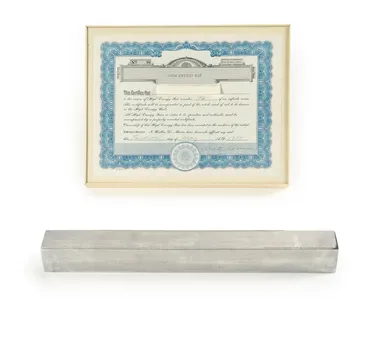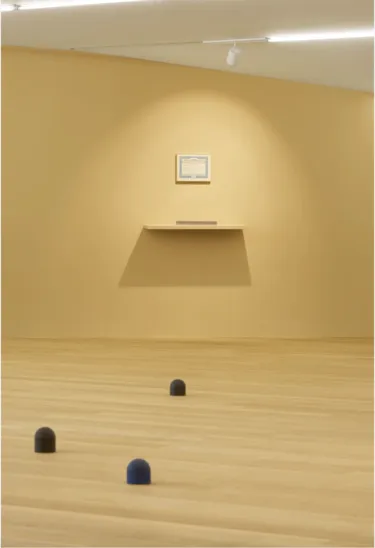Walter De Maria

About the Artist
Born in California in 1935, De Maria began his career at a young age in San Francisco, playing drums in jazz, rock, and avant-garde bands. He then studied painting and, in 1960, moved to New York, where he dedicated himself to sculpture. In his sculptures, land works, and installations, De Maria explores the relationship between the relative and the absolute, using basic geometric components to produce sublime repetitions. By arranging forms according to mathematical sequences, he worked at the intersections of Minimalism, conceptual art, and land art - drawing attention to the limits of gallery spaces, prioritizing bodily awareness, and locating the content of an artwork in the viewer. De Maria dies in New York in 2013.

High Energy Bar and certificate
Nr. 96 from an open-ended edition
1966
Polished steel
Starting from 1965, De Maria, one of the primary representatives of Minimalism, produced these polished steel geometric bars in series. Conceived as an open edition coming to a close upon the artist's death, each bar is conceived as a single element of the Energy Bar Unit, which ideally encompasses them all. These works explore the auratic potential of sculpture itself, liberated from any form of manual craftsmanship, as a consequence of Duchamp’s readymade revolution. The certificate accompanying each sculpture clearly defines how work the work should be disseminated as a sign of the artist's permanent authority. The industrial realization of these perfect forms is self-sufficient; what the artist adds is the relationship of the object with other realms of human perception, such as fields of magnetic and energetic forces that are invisible but to which we all respond.